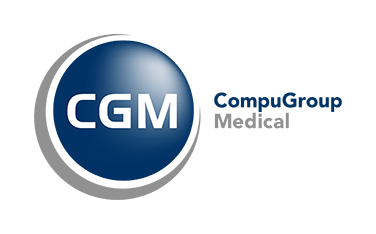Take the “surprise” out of medical bills with patient responsibility estimation
More than half of patients say that they delay paying their healthcare bills, according to a survey by West. And right now, patients are one of the fastest growing payers for practices. No wonder managing overdue payments is such a significant challenge for providers!
According to the survey, patients cite unexpectedly high insurance deductibles as the top reason behind delayed medical payments.
For 2022, the IRS defines a high deductible health plan (HDHP) as any plan with a deductible of at least $1,400 for an individual or $2,800 for a family. An HDHP’s total yearly out-of-pocket expenses (including deductibles, copayments, and coinsurance) can’t be more than $7,050 for an individual or $14,100 for a family, but this limit doesn’t apply to out-of-network services.
With the rise of HDHPs, patients are taking on more financial responsibility for their medical bills. But patients don’t always understand what that means. For instance, most patients don’t know the cost of medical services until they receive a bill. And many patients don’t fully grasp what their insurance plan does and doesn’t cover. This lack of awareness and the resulting delay in payment impact a practice’s revenue cycle.
So, what can providers do to help patients pay their medical bills on time?
Give patients an estimate of what they will owe
Be proactive. Prevent surprises and delayed payments by informing your patients about what they should expect to pay. Creating an accurate patient estimate for each patient may sound daunting given the complexities and variety of healthcare plans. Patient responsibility estimation tools can help. By calculating out-of-pocket costs such as deductibles, copays, and co-insurance amounts, patient estimate tools can quickly show what the patient will owe for a visit. Many Electronic Data Interchange (EDI) companies offer these tools.
For example, eMEDIX offers a Patient Responsibility Estimation tool with their clearinghouse services that helps providers set their patients’ financial expectations upfront. Patient Responsibility Estimation is a web-based product that allows providers to calculate what a patient will owe based on a number of factors, such as whether a patient has met their deductible or if the patient needs to make a copay. This solution enables providers to pre-calculate an individualized out-of-pocket cost estimate using data from previous payments, physician and facility fees, and the patient’s own benefit information.
Patient estimation tools can help increase patient satisfaction because transparency about financial responsibility—in advance of treatment—helps patients feel that they are informed and empowered healthcare consumers.
Provide convenient ways for patients to pay
Once the patient has the estimate, the next important step the practice needs to take is to provide patients with easy and convenient ways for the patient to pay.
First, by leveraging patient cost estimation tools, providers can begin talking about payment as soon as the patient arrives at the office for their appointment. Collecting payment at the time of service gives providers the best chance at collecting outstanding balances on time. Some providers use a policy of keeping a patient’s credit card on file, which facilitates timely transactions.
Next, providers can use e-billing as part of automating patient collections. Many patients prefer receiving their statements electronically and want an option to pay their bills online. Patient statement vendors and portal solutions can provide practices with tools that will allow patients to pay their balances securely and online. These vendors also offer tools that send patients emails to inform them of balances due and then provide secure environments to which those patients can log in and review their statements.
Lastly, providers can make it easier for patients to pay their bills by setting up payment plans for larger balances or for patients that are suffering financially.
Develop your patient responsibility estimation strategy today
With the implementation of the No Surprises Act in 2022, the importance of helping patients understand what they will owe before services are rendered will increase.
Start developing your approach today to help your practice comply with new regulations. Contact us about eMEDIX Reimbursement Solutions to learn more.

